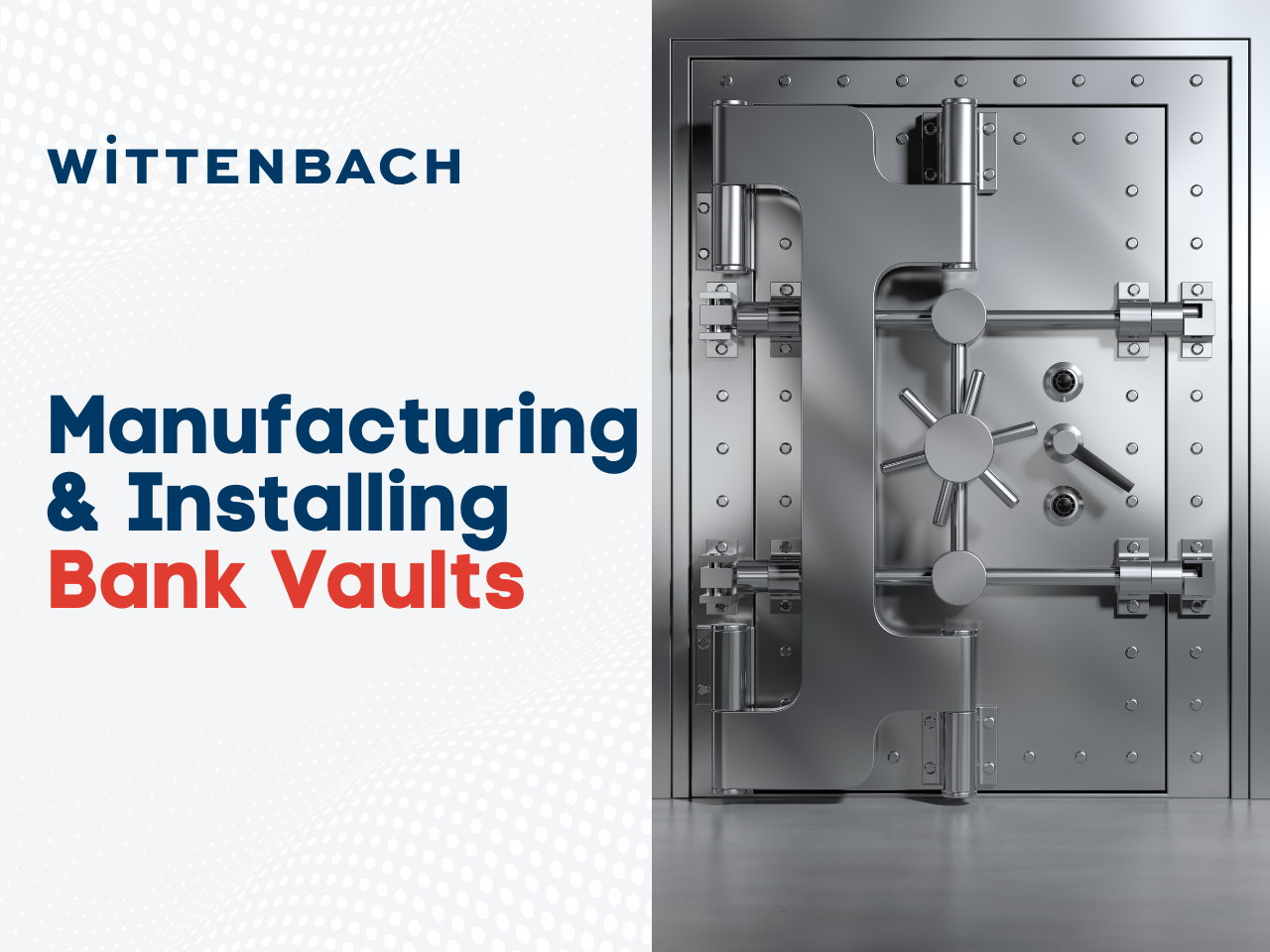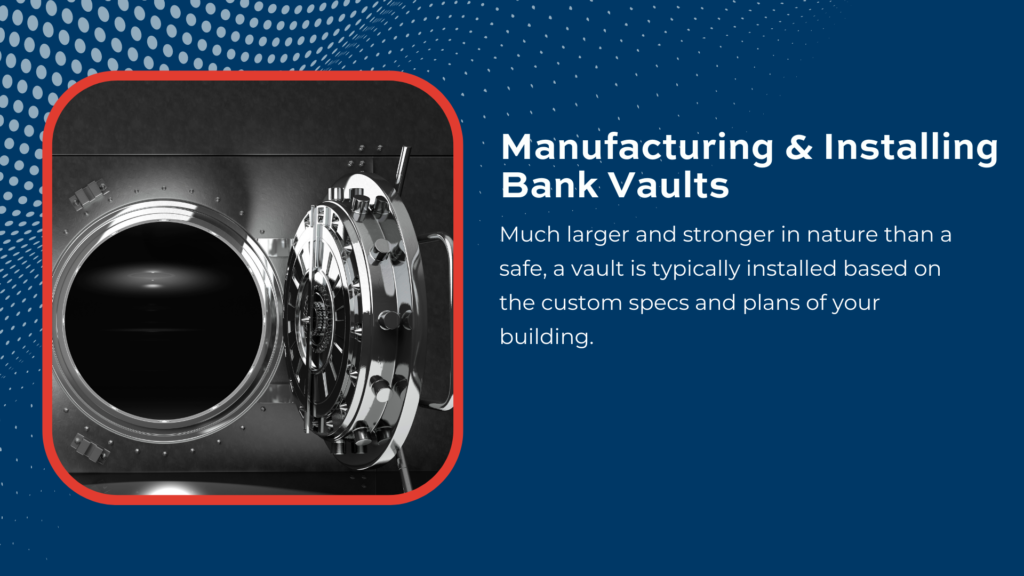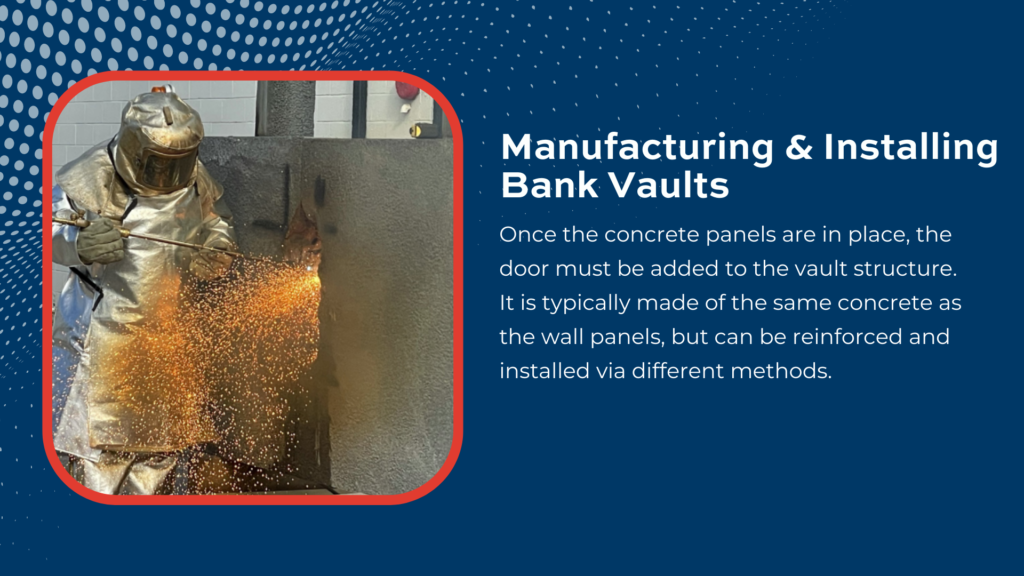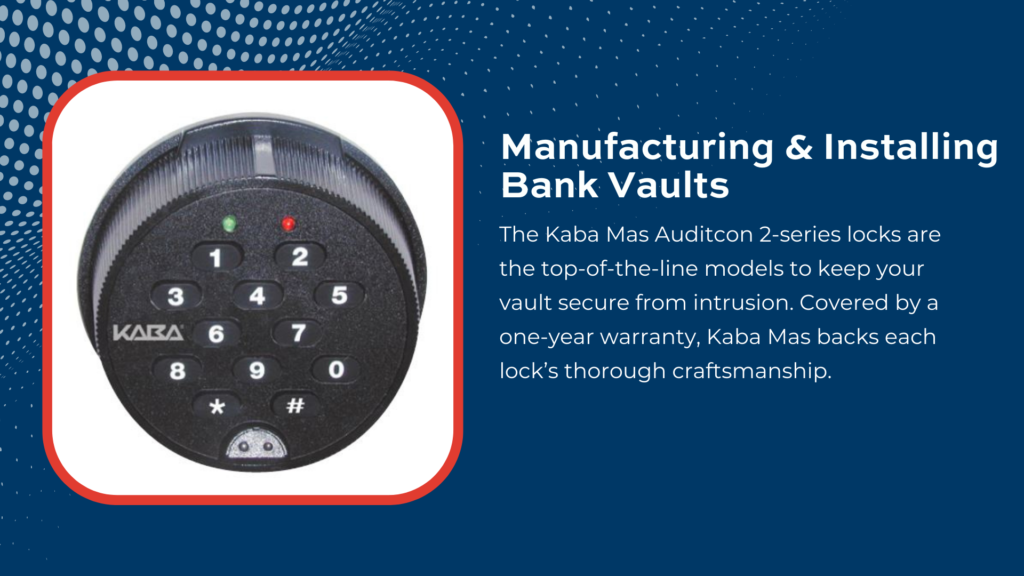Installing, moving, or removing a vault is a significant event in the life of your branch. Not only does your vault safeguard deposit boxes holding countless valuables, a vault is part of the structural fabric of the branch building itself.
Wittenbach’s trusted partner in vaults, Hamilton, specializes in custom vault solutions designed to fit any room size or dimension, whether building a new branch or retrofitting an older building. Below, we will demystify how vaults are made and installed, shedding light on a process that may seem daunting when your financial institution is facing construction or renovation of a branch.
How is a vault made and installed
Much larger and stronger in nature than a safe, a vault is typically installed based on the custom specs and plans of your building. MadeHow.com offers a history of vault construction, referencing that the construction of both walls and doors has changed over time to thwart robberies and provide better overall structure. They add, “Materials used in vaults and vault doors have also changed as well. The earlier vaults had steel doors, but because these could easily be cut by torches, different materials were tried. Massive cast iron doors had more resistance to acetylene torches than steel. The modern preferred vault door material is actually the same concrete as used in the vault wall panels. It is usually clad in steel for cosmetic reasons.”
The steps for installing bank vaults, which must be completed by a team of experts and contractors, include:
- Building the walls: The HowItWorks Daily website says, “The first step in creating a bank vault is to build its wall panels. These are made from concrete with zero ‘slump’, a quality that means it is super-strong and sets very quickly when put into the moulds.” This means the concrete is so thick it cannot be poured, and all of this activity happens before the walls are transported to the financial institution.
- Reinforcing and settling the walls: HowItWorks adds, “While the concrete is still damp, steel rods are inserted to provide extra strength.” The moulds, filled with concrete, are then vibrated for several hours. This eliminates any air pockets and settles the material so that it does not have structural vulnerabilities. A trowel completes this process on the outside of each panel, and they dry before moving to the construction site.
- Adding the door: Once the concrete panels are in place, the door must be added to the vault structure. It is typically made of the same concrete as the wall panels, but can be reinforced and installed via different methods. MadeHow explains, “Some manufacturers use the steel cladding as the mold and pour the concrete directly into it. Other manufacturers use a regular mold and screw the steel on after the panel is dry.”
Most often, vault doors are round, not rectangular, and safety reasons account for this, too. USA Safe and Vault says, “This is all because both frame and door can be accurately cut roundly within a big lathe to build them sheltered fit. Otherwise, if it is rectangular, each point is not able to fit and as difficult as it can lead to distortion. Traditionally, it works by pushing some big rods into the round manhole covers. If the rods are the same length, it will be easier. The round shape means that you cannot utilize stress concentration at the door corner.”
- Adding the lock: Typical vault locks in banks and credit unions require combinations to open, and also feature a time delay so that it cannot open for a specified number of hours. In addition, vaults may also require two employees with different combinations to open it in sequence, to avoid internal theft.
- Final installation: All of the above-mentioned vault components are installed in place via welding. An alarm system and other security products may be the finishing touches on the vault project, ensuring that its contents are secure.
Protecting your vault: recommended branch security products
Vaults are designed with one- to several-feet-thick walls, providing fortification against would-be robberies, as well as natural disasters. They can prevent damage to valuables due to flooding, extreme wind, heat, and even seismic activity. Vaults protect your clients’ assets, and there are additional layers of security products that can help to deter and detect vault breaches.
- Hamilton modular vaults: Per the Hamilton website, “Hamilton’s modular vault panels provide the ultimate in security and flexibility. Panels are lighter and easier to install than poured on-site concrete walls. Plus, as your vault needs change, Hamilton panels allow you the flexibility to increase your vault by adding more panels, or if moving, panels can be relocated to a different site.”
- The Kaba Mas Auditcon 2-series locks are the top-of-the-line models to keep your vault secure from intrusion. Covered by a one-year warranty, Kaba Mas backs each lock’s thorough craftsmanship. In addition, your branch can choose from a side bolt, which locks when the vault is closed, or a deadbolt, which is more of a traditional dial lock. Per our recent blog post, the Auditcon 2-series 252 lock can accommodate 20 individual users and an audit trail of the 100 most recent entries; the Auditcon 2-series 552 lock accommodates 99 users and an audit trail of 400 entries.
- The Verint EdgeVR security system that deters criminals on both the interior and exterior of your branch. High-resolution IP cameras can be placed virtually anywhere and send data to the cloud. Coupled with superior facial recognition technology, that electronic security suite mean that your branch’s footprint, employees, and assets—vault included—are safer than ever.
Conclusion
If your financial institution is considering how to tackle a vault installation, de-installation, or renovation—or if you just wanted to learn more about vault construction, protection, and innovation—Wittenbach is ready to support! Our team of seasoned experts, alongside steadfast partnership with manufacturers Hamilton and Kaba Mas, can help you accomplish your vault-related projects with ease. Contact us today to get started!




